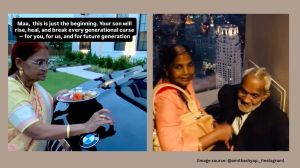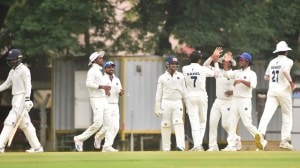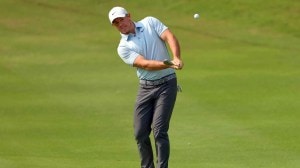Vet pulls out 55 kg plastic from cow’s stomach
MUMBAI, December 7: She is three, possibly four. Her gentle eyes dilate somewhat as the doctor benumbs her with anaesthesia. He then makes ...

MUMBAI, December 7: She is three, possibly four. Her gentle eyes dilate somewhat as the doctor benumbs her with anaesthesia. He then makes a small incision on her back, cuts open her stomach to pull out a 50 paise coin, a rubber balloon, a metal Ganesha, a rubber stamp from Ghatkopar, a couple of iron nails, a bottle cork and plastic — reams and reams of plastic.
At the end of the operation which lasts nearly an hour and a half, seven doctors have, between them, pulled out 55 kgs of plastic from the cow’s stomach.
The operation was the highlight of a trip organised by the Runanubandh Trust on Saturday to highlight the negativity of modernisation. “We want to educate people about the ill effects of modernisation on mute animals, who are incapable of complaining,” said Vasant Galia, member of the Runanubandh Trust. The Jeevdaya Mandir Pashu Ashram, an NGO, 10 kms from Virar, and where the operation was conducted receives around 3000 stray animals every year. Vets are brought here to operate upon the animals — from horses to dogs.
Says Dashrathbhai Thaker, secretary of the trust that runs the Ashram, “In most cases, owners drive their cattle onto the streets to save themselves the cost of feeding. The animals then feed from garbage bins which mostly brim over with plastic bags."
“Over 50 per cent of the cows and buffaloes in the city have at least 10 to 20 kgs of plastic in their bodies, and almost all of them feed on some foreign body or the other,” said Dr L B Sarkate, professor of the surgery department at the Bombay Veterinary College, who operated on the cow.
“There have been instances when we have removed syringes and needles from their stomachs,” he added.
The plastic in the stomach of the cow which was being operated upon yesterday, was a huge tangled mess, so much so, that the doctors found it difficult to pull it out. They took turns on it, sometimes replacing the knife for a saw to cut through the filth. If the plastic was too tangled, they tugged hard at it. At such a time, the cow’s stomach lining would also be pulled out in the process. The doctors would then tuck it back in.
“Though nails and corks are more harmful, as they are not found in such large quantities like plastic, they do not pose much of a problem,” Sarkate said. Moreover, the plastic remains in the stomach and makes it next to difficult for the animal to eat anything. It finally dies of starvation.
Since plastic cannot be detected on X-ray, the only option is to operate on them after examining the heartbeat and the movement of the stomach.
However, a successful operation does not guarantee the animal’s survival.
“She has a 50 per cent chance of living if properly taken care of,” informed the doctor.
The Jeevdaya Ashram gives away the healthy animals to old age homes, orphanages, TB centres or to surrounding villages. The old ones are looked after at the Ashram. “But we cannot do much if people do not co-operate with us. We cannot cure more than a small band of animals. The real solution lies in the banning or using minimum of substances like plastic by the people,” said Dashrathbhai Thaker, secretary of the trust.



- 01
- 02
- 03
- 04
- 05




























